A visual exploration of the 360Giving data journey workshop
On 31 May 2018, I facilitated a data journey with 360Giving, focusing on statutory funding. Thank you to all the participants and my co-facilitators: Tracey Gyateng of DataKind UK, Anna Petruccelli of Comic Relief and Mor Rubinstein and Natalia Domagala of 360Giving.
As Fran Perrin, founder and director of 360Giving, said: “Questions can change the world”. The aim of this data journey is to try and answer two questions that were selected as part of 360Giving’s Challenge Fund and to help participants learn to use data confidently and draw useful insights as part of their decision making.
This was the first in a series of interactive workshops, where we met our fellow data travellers and had fun learning the serious business of data analysis.
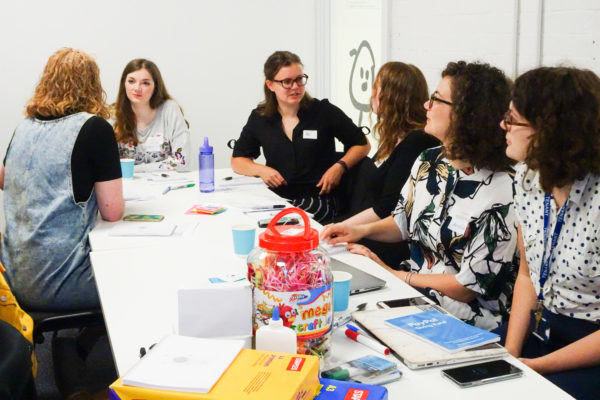
Meeting our fellow data journey travellers
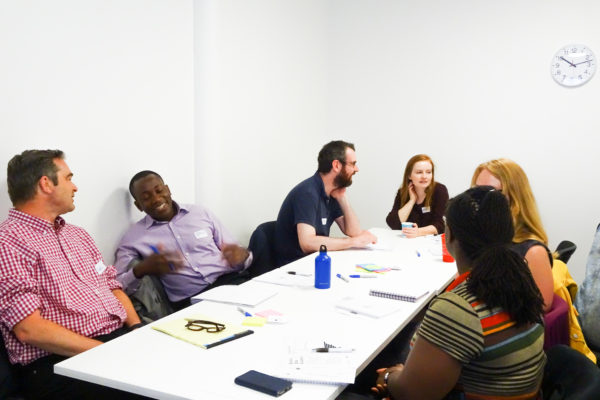
An icebreaker exercise is a great way to make people feel welcome and start up the conversation in a workshop. We began by getting to know our neighbour and found we all shared similar questions about the impact of changes to statutory funding.
Themes to refine the statutory funding question
| What is statutory funding? | Where are the gaps, hot spots and places with largest changes to statutory funding? |
| Which areas have seen the most impact from changes to statutory funding? | What are the main issues with statutory funding? |
| What is the impact of funding changes on trusts? | What is the impact of the Big Lottery Fund on statutory funding? |
| What are the stories and context behind changes to statutory funding? | How much statutory funding is available and what for? |
With the ice broken, it was time to move onto learning by doing. Before jumping into learning about data and data analysis, we warmed up by getting creative with a fun activity – building a data sculpture.
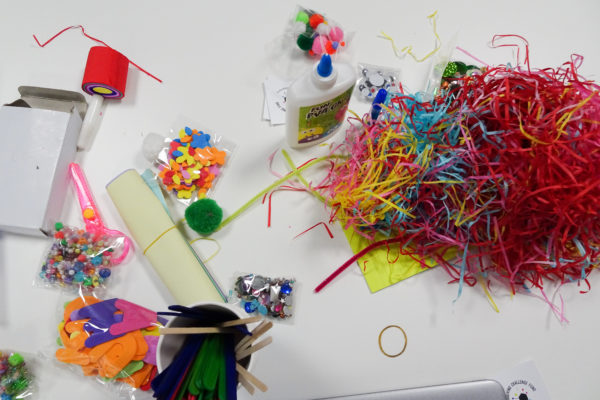
Materials for building a data sculpture
Using craft materials, we explored communicating interesting information from an ice cream consumption case study without creating traditional data visualisations. Thanks to databasic.io for the superb resources.
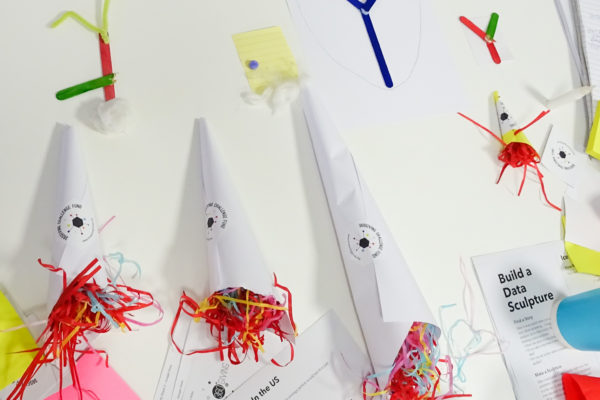
Finished data sculptures!
Playful approaches like this can help to build confidence, get people thinking creatively and help folks get to know each other while looking for quick stories to tell using data.
It was soon time for the first interactive session – what is data?
 When I facilitate learning-by-doing sessions, the aim is to encourage everyone to learn by taking part, so activities are a priority. By trying to answer the question first, participants think more critically about the answer, ask more questions and find it easier to recall what they learnt.
When I facilitate learning-by-doing sessions, the aim is to encourage everyone to learn by taking part, so activities are a priority. By trying to answer the question first, participants think more critically about the answer, ask more questions and find it easier to recall what they learnt.
After lunch, we focused on ‘asking good questions’, the key part of our data journey.
Our main question? What is statutory funding exactly? Tracey Gyateng of DataKind UK was on hand to help us understand statutory funding.
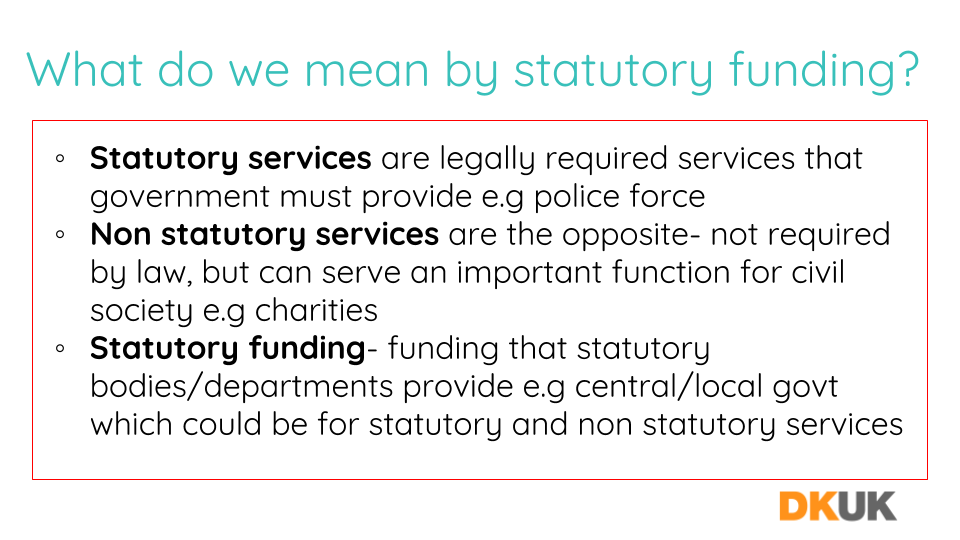
What do we mean by statutory funding © DataKind UK
After defining statutory funding, we examined the two questions we want to answer:
|
These questions are quite broad, so we began the process of refining them. Just like we did when building a data sculpture, we looked for interesting angles in our main question that we could answer by combining 360Giving data from GrantNav with other data.
It was a fun and productive day with excellent feedback about its relevance to becoming data leaders and building skills that will be used in participant’s daily roles.

360Giving schema visualised by Edafe Onerhime
We ended with several questions we want to answer and take action on.
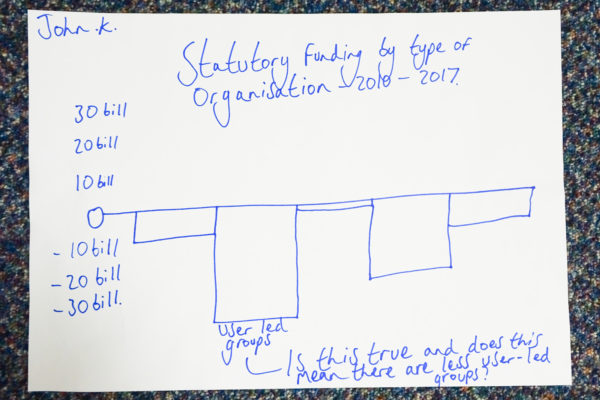
Statutory funding by type of organisation 2010-2017
Some of the refinements include statutory funding and:
- Support and care for older people
- Poverty-related gaps in Trafford
- Biodiversity in London, the High Weald AONB and the Lochaber region of the Scottish Highlands
- Early childhood development (ECD) services
- Areas of deprivation (bottom 10%)
- Ex-offender support
- Independent funding in East Midlands local authorities
We’ll continue our data journey with two more workshops and five weekly check-ins. You can follow along, read the slides, see the questions and more on the 360Giving discussion forum: resources for workshop #1.
